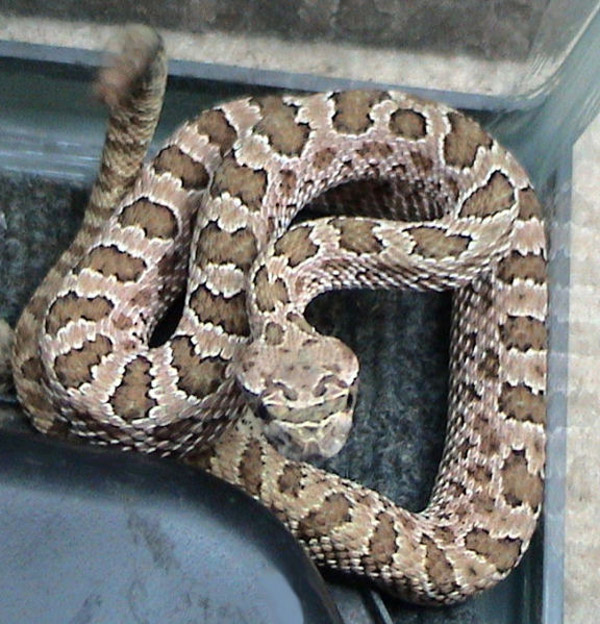Wildlife North America . com North American Animals - mamals, birds, reptiles, insects |
Hopi Rattlesnake (Crotalus viridis nuntius)
Hopi Rattlesnake Photograph by LA Dawson. Some rights reserved. (view image details)
HOPI RATTLESNAKE FACTS
DescriptionThe Hopi Rattlesnake is the smallest subspecies of C. viridis. The color is variable and may be pink, gray or orange-brown in color, matching the soil and rock color of their natural range. The back has darker brown blotches. The eyes have vertical pupils, and the tail has a rattle made of keratin. Each time the snake sheds its skin, a new segment is added to the rattle. Size 60cm Environment desert, semi-arid areas, shelters in rock crevices or animal burrows to avoid the heat Food small mammals and lizards Breeding The Hopi Rattlesnake is ovoviviparous. They breed in the spring and give birth to 4-6 young in the early fall. The young are colored almost the same as the adults, and are approximately 19cm long. They reach maturity between two and three years of age. Range north and east Arizona, north western New Mexico Classification
Relatives in same Genus Eastern Diamondback Rattlesnake (C. adamanteus) Western Diamondback Rattlesnake (C. atrox) Sidewinder (C. cerastes) Baja California Rattlesnake (C. enyo) Timber Rattlesnake (C. horridus) Banded Rock Rattlesnake (C. lepidus klauberi) Rock Rattlesnake (C. lepidus lepidus) Southwestern Speckled Rattlesnake (C. mitchellii pyrrhus) Blacktail Rattlesnake (C. molossus molossus) Southern Pacific Rattlesnake (C. oreganus helleri) Great Basin Rattlesnake (C. oreganus lutosus) Northern Pacific Rattlenake (C. oreganus oreganus) Twin-spotted Rattlesnake (C. pricei) Red Diamond Rattlesnake (C. ruber) Mojave Rattlesnake (C. scutulatus) Tiger Rattlesnake (C. tigris) Arizona Ridgenose Rattlesnake (C. willardi willardi) Home | Mammals | Reptiles | Birds | Insects | Privacy Policy | Disclaimer | Contact Us |